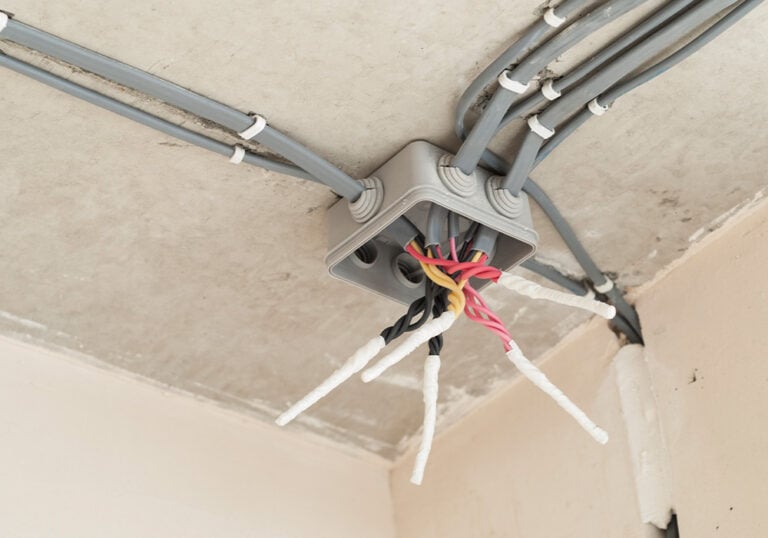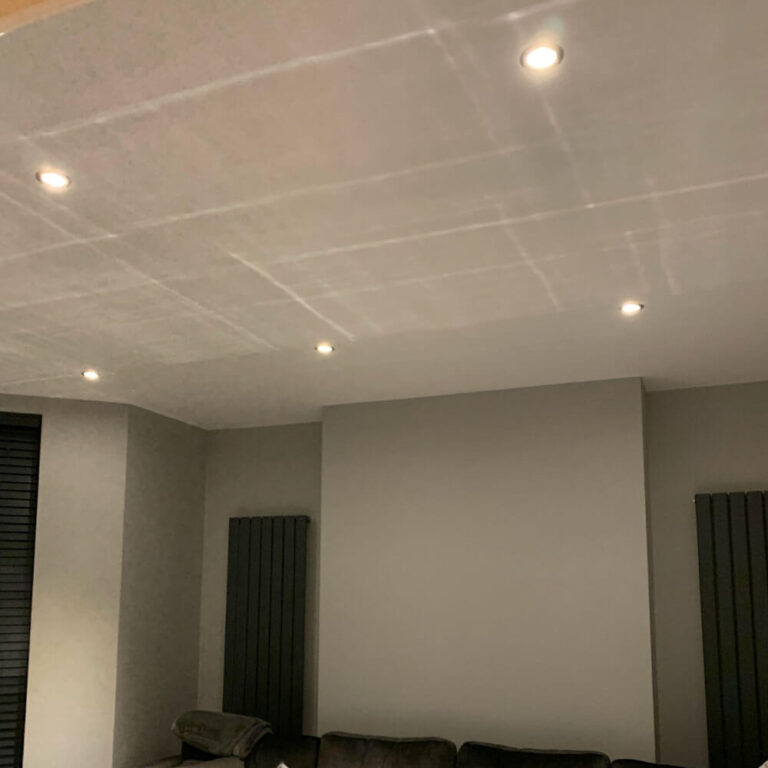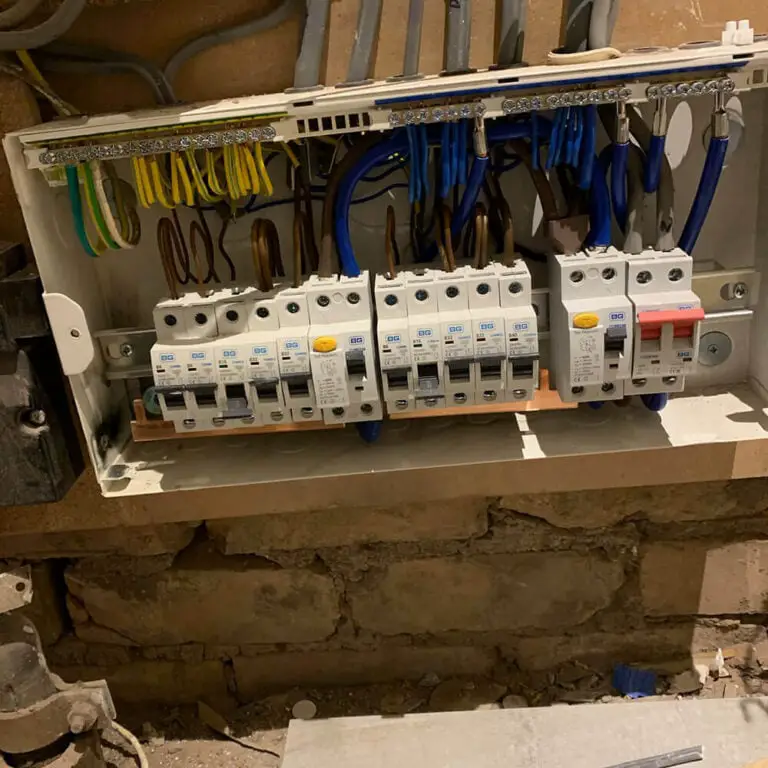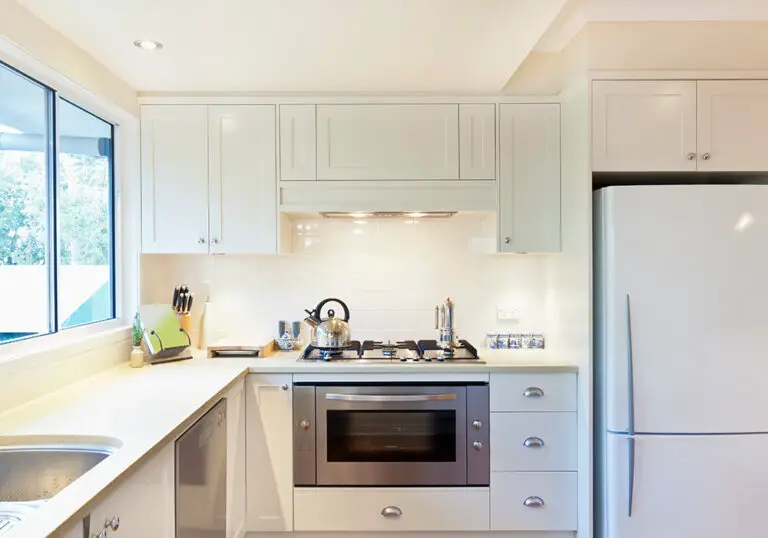Can You Have A Dimmer Switch In The Bathroom?
Dimmer switches have become quite popular in modern homes for their ability to create a relaxing and variable ambience. When considering the installation of a dimmer switch in a bathroom, there are several factors to take into account, such as safety, regulations, and the type of dimmer switch suitable for use in a damp environment.
Bathrooms are unique spaces, requiring specific electrical regulations and precautions to be followed due to the presence of water and humidity. Ensuring that a dimmer switch is compatible with these regulations and installed safely is crucial before you can enjoy the benefits of adjustable lighting in your bathroom.
It is possible to have a dimmer switch in the bathroom, provided that it is installed far enough from damp zones, sealed to protect from dampness, and complies with the relevant electrical regulations. In some cases, dimmer switch pull cords or installing the dimmer outside the bathroom may be a safer option.
Key Takeaways
- Dimmer switches can be safely installed in bathrooms, provided they adhere to electrical regulations and are protected from dampness.
- Options such as pull cord dimmers or installing the switch outside the bathroom can help ensure safety and compliance.
- Choosing the right dimmer switch and correct installation methods are crucial for an energy-efficient and comfortable bathroom ambience.
Can You Have A Dimmer Switch In The Bathroom?
Yes, you can have a dimmer switch in the bathroom, provided it’s installed far enough from damp zones and sealed to protect it from dampness. Dimmer switch pull cords are a safer option for use within the bathroom. Alternatively, you can install the dimmer outside the bathroom for added safety.
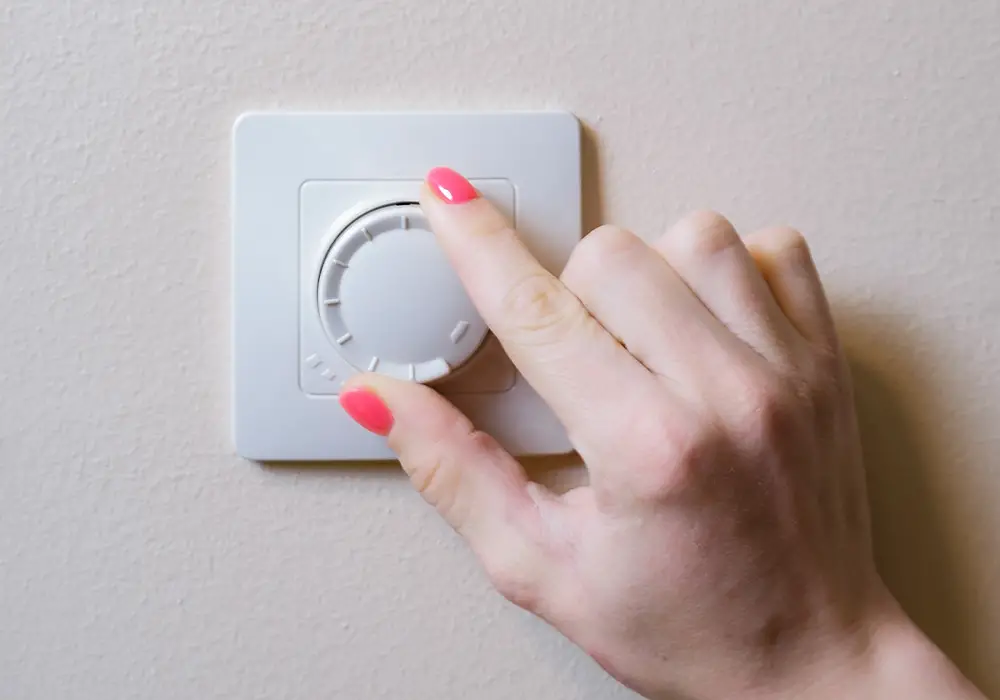
To comply with bathroom electrical regulations, pull-chain switches are the preferable method, as wet hands do not come into contact with any part of the switch mechanism. However, plate switches are also allowed in the bathroom as long as they are suitable for use in humid conditions and installed at least 60cm away from the edge of the bath, basin, or shower enclosure. A pull cord can be used in any location within the bathroom, offering a safe and convenient alternative to plate switches.
Installing a dimmer switch in the bathroom can enhance your experience by allowing you to control the brightness of the lights. Bright lights are beneficial for activities like applying makeup and shaving, while dimmer lights provide a more soothing atmosphere for a relaxing bath.
When considering installing a dimmer switch in your bathroom, remember to follow the Building Regulations and maintain IP protection for safety reasons. If you want to use a wall switch, it should be placed outside the bathroom. Alternatively, replace the wall switch with a dimmer switch for easy light control from outside the bathroom area.
By following these guidelines and regulations, you can safely and effectively use a dimmer switch in your bathroom to create the desired ambient lighting.
Legal and Safety Considerations
When considering installing a dimmer switch in the bathroom, it’s essential to be aware of the legal and safety considerations. Bathrooms are unique spaces, and the installation of electrical fittings requires adherence to specific regulations to ensure the safety of you and your family.
First of all, understand that electrical work in a bathroom is considered notifiable because it falls under special location conditions. As a result, you should always consult a professional electrician or a competent person to ensure that any installations comply with the regulations that apply in your region.
In the UK, the safety of electrical installations in the bathroom is governed by the Bathroom Electrical Regulations and adherence to BS 7671. These regulations dictate that light fittings, including dimmer switches, should be enclosed and protected from water if they are within 0.6m of a bath or shower. The regulations also specify different zones in the bathroom, based on the potential exposure to water and dampness. Each zone has its requirements for the types of electrical fittings and their appropriate ingress protection (IP) ratings.
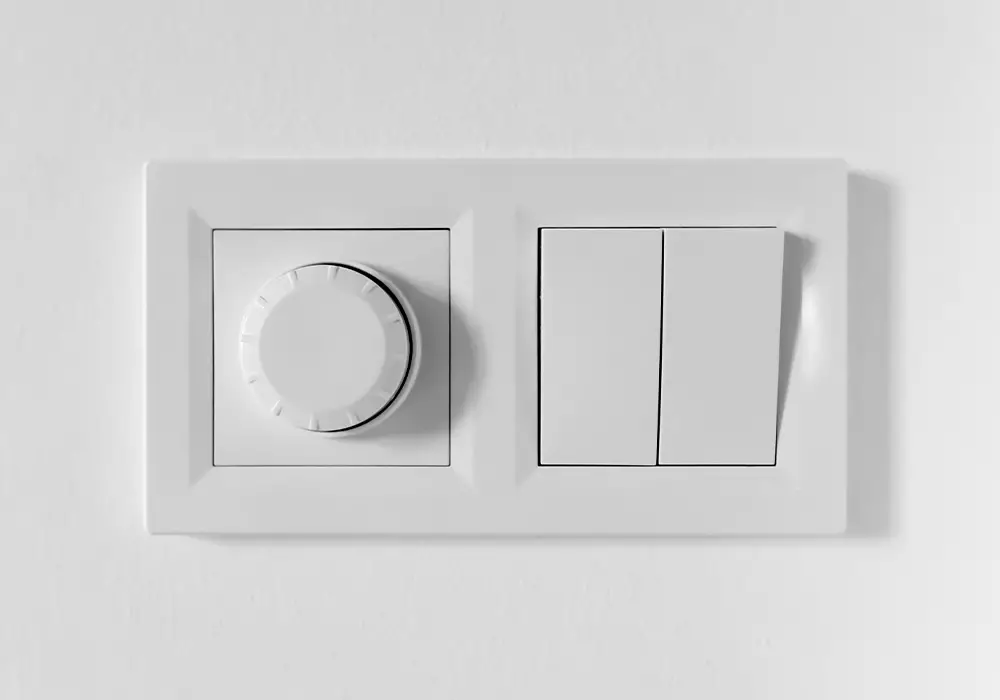
For dimmer switches, it’s recommended that you install a sealed dimmer switch far away from damp zones or install a dimmer switch pull cord, which is considered a safer option. Alternatively, you can also install the dimmer outside the bathroom, which meets the requirements of placing a plate switch outside the bathroom zones.
Following these legal and safety considerations will ensure that your dimmer switch installation is in compliance with the regulations and help maintain a safe environment in your bathroom for you and your family.
Types of Dimmer Switches Suitable for Bathrooms
Rotary Dimmer
A rotary dimmer is a traditional type of dimmer switch that features a rotary knob to control the intensity of the light. When considering the bathroom environment, make sure to choose a rotary dimmer that is compatible with LED bulbs. As bathrooms can be damp, opt for a pull cord version or install the rotary dimmer outside the bathroom for safety purposes.
Slide Dimmer
A slide dimmer offers a modern alternative to the rotary dimmer, which allows you to adjust the light intensity by sliding a control along a track. Slide dimmers can be a good fit for bathrooms, as they are often compatible with various types of lighting, including LEDs. Choose a model with a trailing-edge function to ensure smooth functioning with LED bulbs. Ensure the slide dimmer is installed in a safe location, either outside the bathroom or with proper protection from dampness.
Touch Dimmer
Touch-dimmable switches are suitable for the bathroom due to their user-friendly nature and minimalist design. These dimmers typically use capacitive touch technology, detecting the presence of your finger and adjusting the light intensity accordingly. Make sure the touch dimmer you choose is compatible with your bathroom’s LED bulbs and meets the required safety standards for use in damp environments.
Smart Dimmer
Smart dimmers are an advanced option for controlling lighting levels in your bathroom, as they can be controlled via smartphone apps, voice commands, or even automation routines. When choosing a smart dimmer for your bathroom, ensure it is compatible with your existing smart home ecosystem, such as Google Assistant, Amazon Alexa, or Apple HomeKit. Consider features like an adjustable minimum brightness setting and overload protection. Always follow safety guidelines for installation, including placing the smart dimmer in a properly protected location or even outside the bathroom.
Remember to always consult an electrician for advice on the suitability and installation of dimmer switches in your bathroom to ensure compliance with safety standards.
Impact on Bathroom Ambience
Installing a dimmer switch in your bathroom can significantly enhance the ambience and atmosphere. With a dimmer switch at your disposal, you have the flexibility to adjust the brightness of your bathroom lights to match your mood and preferences.
Imagine yourself wanting to take a relaxing bath after a long day. A dimmer switch lets you reduce the brightness of your bathroom lights, creating a soothing and calming environment that helps you unwind. On the other hand, when you need bright lights for tasks like shaving or applying makeup, you can simply increase the brightness.
Moreover, a dimmer switch allows for a gentle transition from darkness to light and vice versa. This can be particularly useful during nighttime visits to the bathroom, when you don’t want to be blinded by bright lights.
Efficient use of a dimmer switch in your bathroom can also contribute to energy savings. By adjusting the intensity of the lights, you can reduce the energy consumption and lower your electricity bills. Furthermore, reduced brightness can prolong the lifespan of your light bulbs.
In conclusion, incorporating a dimmer switch in your bathroom not only enhances the overall ambience but also offers practical benefits such as energy savings and improved comfort.
Technical Aspects of Installation
When considering installing a dimmer switch in your bathroom, it is essential to be aware of the technical aspects involved. Firstly, ensure that the dimmer switch is installed far enough from damp zones to prevent water damage and electrical hazards. This can typically be achieved by placing the switch outside Zone 2, which is 0.6m from the edge of the bath or shower.
To further safeguard the switch against dampness, you should opt for a sealed model or consider using a dimmer switch pull cord. Pull cords are a safer alternative, as they significantly reduce the risk of water coming into direct contact with the switch.
Before beginning the installation, be sure to turn off the electrics in your house to avoid any potential hazards. It is also essential to use the appropriate type of dimmer switch for your specific bathroom lighting configuration. There are various types of dimmer switches, such as single-pole and three-way dimmers, to cater to diverse requirements. For a single room, single-pole dimmers are ideal, while three-way dimmers are suitable for controlling lights in two or three rooms.
During installation, be mindful of the wiring connections. Most dimmer switches feature three terminals. If you are replacing a single one-way light switch, use the terminals marked Com and L1. In case you have a two-way switch, all three terminals will be utilised.
If your bathroom lighting comprises a fan, it is crucial not to connect the fan to the dimmer switch due to the way dimmers work. This can be overcome by using a dimmable transformer specifically designed for lights.
Following these technical guidelines and precautions, you can successfully install a dimmer switch in your bathroom, enhancing its functionality and ambience.
Choosing the Right Dimmer Switch for Your Bathroom
When selecting a dimmer switch for your bathroom, it’s essential to take various factors into consideration to ensure safety and compatibility with your lighting system.
First, check the electrical code regulations in your country. In the US, guidelines are set by the National Electrical Code (NEC). In the UK, you can have a dimmer or light switch in the bathroom if it is a specific type designed for damp areas. Be aware that Building Regulations and IP protection requirements in the UK mean you cannot have a wall switch inside the bathroom; instead, the dimmer switch should be located outside the bathroom.
Next, calculate the total load of your lighting system to make sure the dimmer switch can support the number of LED bulbs you’re using. Divide the minimum and maximum load of the dimmer by 10. For example, if a dimmer is rated 200W-600W, the minimum load would be 20W and the maximum load would be 60W. This calculation helps you identify the appropriate dimmer switch for your lighting system.
Compatibility with your light bulbs is also important. Choose a dimmer switch that is designed to work with LED bulbs, as these have become the standard for energy-efficient lighting. Many modern dimmer switches feature intelligent dimming technology, soft start, intelligent overload protection, and adjustable brightness settings. These features ensure smooth operation and prevent damage to the dimmer or your LED bulbs.
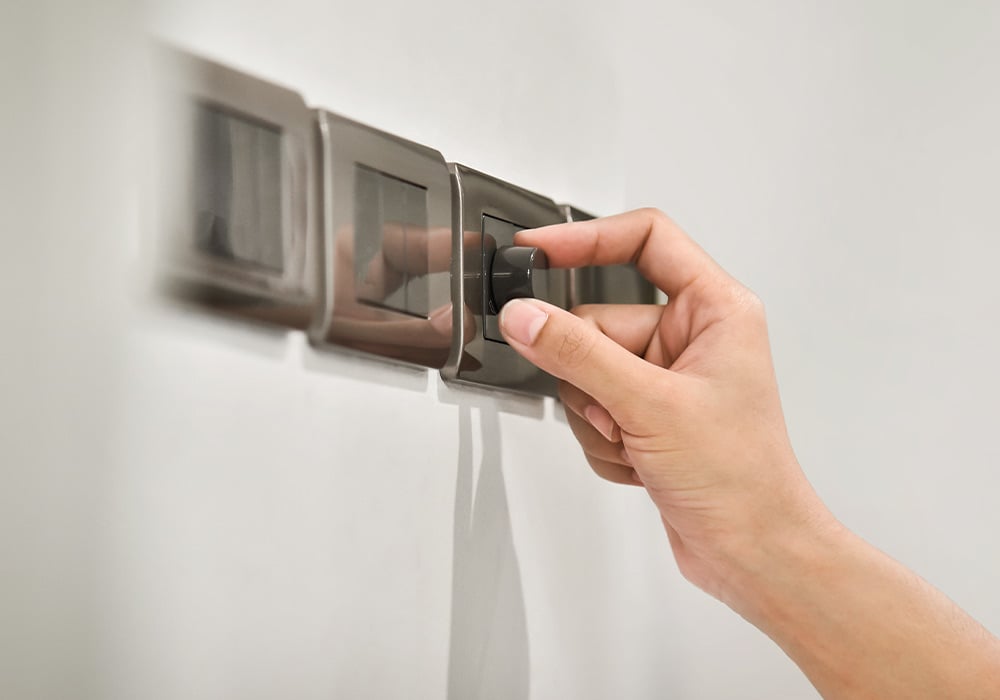
Finally, consider whether you need a one-way or two-way switch. Most dimmer switches are designed to work as one or two-way light switches but not as intermediate switches. This means they are suitable for lighting circuits with one or two switches but cannot be used in more complex circuits. Make sure to select a dimmer switch that suits your specific bathroom lighting configuration.
By considering these factors, you’ll be able to choose the ideal dimmer switch for your bathroom, providing you with adjustable and safe lighting that meets your preferences and complies with local regulations.
Troubleshooting Common Problems
It’s not uncommon to experience issues with dimmer switches in bathrooms. Let’s explore some common problems and their solutions to help maintain a well-functioning dimmer switch.
Flickering Lights: One of the most frequent problems with dimmer switches is flickering lights. This can be due to various factors such as the type of light bulb, the quality of the dimmer switch, or an incompatible pairing between the switch and the bulb. To resolve this issue, try changing the type of light bulb you are using.
Buzzing Sound: Older or poorer quality dimmer switches can be prone to buzzing or humming, especially when lights are dimmed. This is caused by the way these dimmers operate and could be a result of age or poor quality. Replacing the dimmer switch with a modern, high-quality one can alleviate this issue.
Dimmer not Working: If your dimmer switch isn’t working, start by checking for a tripped circuit breaker, which may be causing a loss of power in the room. Next, inspect the dimmer itself. Keep in mind that dimmer switches operate at approximately 60°C (140°F), much warmer than standard switches, and typically last for about 15 years. If the switch has reached the end of its lifespan, you’ll need to replace it.
In conclusion, by addressing these common issues, you can maintain a properly functioning dimmer switch in your bathroom. Keep in mind the factors that contribute to these issues, and take proper measures to ensure that your dimmer switch operates smoothly and efficiently.
Maintenance and Care Tips
To ensure the safe and efficient operation of a dimmer switch in a bathroom, it is essential to maintain and care for it properly. Here are a few care tips to follow:
- Switch off the power before performing any maintenance: To ensure your safety, always turn off the power at the electrical panel feeding the switch before you start any maintenance or cleaning tasks.
- Keep the area around the switch clean: Dust and dirt buildup around a dimmer switch can affect its performance. Regularly dust the area around the switch, and use a dry, soft cloth to gently clean the surface of the switch.
- Check for loose wiring: Loose wires can create electric hazards and affect the switch’s performance. Routinely inspect the wiring around the dimmer switch to make sure all connections are secure. Consult an electrician if you are unsure about any wiring issues.
- Replace damaged switches: If your dimmer switch shows signs of wear, such as cracks or discolouration, it is essential to replace it with a new one to prevent any electrical hazards. Follow the manufacturer’s instructions and refer to a qualified electrician if necessary.
- Use dimmable LED lights: To ensure proper functioning, only use dimmable LED lights with your dimmer switch. Non-dimmable LED lights can flicker or create a buzzing sound when used with a dimmer. Always check the compatibility of your bulbs with the dimmer switch to avoid any issues.
By following these maintenance and care tips, you can enjoy the benefits of a dimmer switch in your bathroom while ensuring its proper functioning and longevity.
Cost and Energy Efficiency Implications
When considering the installation of a dimmer switch in your bathroom, it’s essential to evaluate both the cost and energy efficiency implications. The price of installing a dimmer switch usually ranges from £35 to £65, and it takes around 0.5 to 1 hour for an electrician to complete the task. Keep in mind that the overall cost could vary depending on your location and the complexity of the job.
Moreover, dimmer switches can reduce energy consumption by adjusting the level of electric current flowing to your lights, thus lowering the brightness. This energy-saving feature can lead to cost savings on your energy bills. With the transition from traditional incandescent bulbs to more energy-efficient CFL and LED bulbs, using dimmer switches in combination with these lighting options can save up to 90% in lighting energy costs.
Shortening the time you spend in the shower can play an additional role in your bathroom’s energy efficiency. Reducing your shower time to just 4 minutes could save a typical household up to £95 per year on energy bills, and an extra £60 on the water bill if metered.
It’s worth noting that dimmer switches not only provide energy and cost savings but also contribute to a room’s aesthetics and atmosphere. By adjusting brightness levels, you can create the perfect ambiance during your time in the bathroom.
In summary, installing a dimmer switch in the bathroom can be a cost-effective and energy-efficient choice. Remember to combine it with energy-saving light bulbs and keep an eye on your shower time to maximise the benefits.


